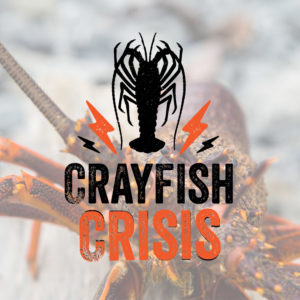LegaSea awaits the Minister’s decision for the future management of four crayfish stocks by the end of March. The new catch levels for two North Island and two South Island stocks will apply from April 1st.
In February our submission to the Ministry supported a major catch reduction in CRA 2, the status quo in two other stocks, and a commercial catch reduction in CRA 7, Otago.
As a separate process the Ministry for Primary Industries has indicated it will review the current regulations to control fishing in CRA 2, between Te Arai Point in the north and East Cape. Changes will likely affect both commercial and recreational fishers.

Recreational harvest of crayfish in CRA2 is low, probably the lowest ever given the depleted state of the fishery. The most recent harvest survey estimates that recreational fishers take in total around 40 tonnes per annum.
These researchers found that 73% of all recreational divers or potters in CRA 2 returned with none, one or two crayfish. This level of harvest debunks some claims by commercial interests that the problem in CRA2 has been high recreational or illegal catch. That is a diversionary argument. It is the low numbers of new crayfish reaching legal size that is the real issue and this must be addressed.
Another issue is the potential for recreational catch to increase as the stock rebuilds. Restraints will be required on recreational catch to ensure the extra abundance is not lost while we are trying to restore the stock. The intention is to make crayfish accessible to more people, without a large increase in catch.
In our recent submission we stressed that recreational fishers are willing to contribute to rebuilding crayfish abundance, as long as the benefits from the rebuilt stock are shared. We have no intention of helping to rebuild CRA 2 just to have the new recruits sold and jetted overseas.
Our recent submission acknowledged the impact that a full closure or daily limit reductions will have on recreational dive businesses. While commercial interests and Ministry are quick to point out the unreasonable economic impacts of any catch reductions on commercial operators, recreational dive businesses have already suffered the consequences of low abundance. They will again suffer if amateur daily bag limits are substantially reduced.
It all comes down to what we are prepared to forego now in the interests of restoring abundance so there is sufficient crayfish to support a healthy marine ecosystem, thriving businesses, and a resilient stock for future generations. This is a debate that needs resolution and it starts with the Minister’s decision that will apply from April 1st.
As recreational fishers we want to be at the forefront of promoting precautionary management decisions in the interests of leaving sufficient abundance for our kids and theirs.





